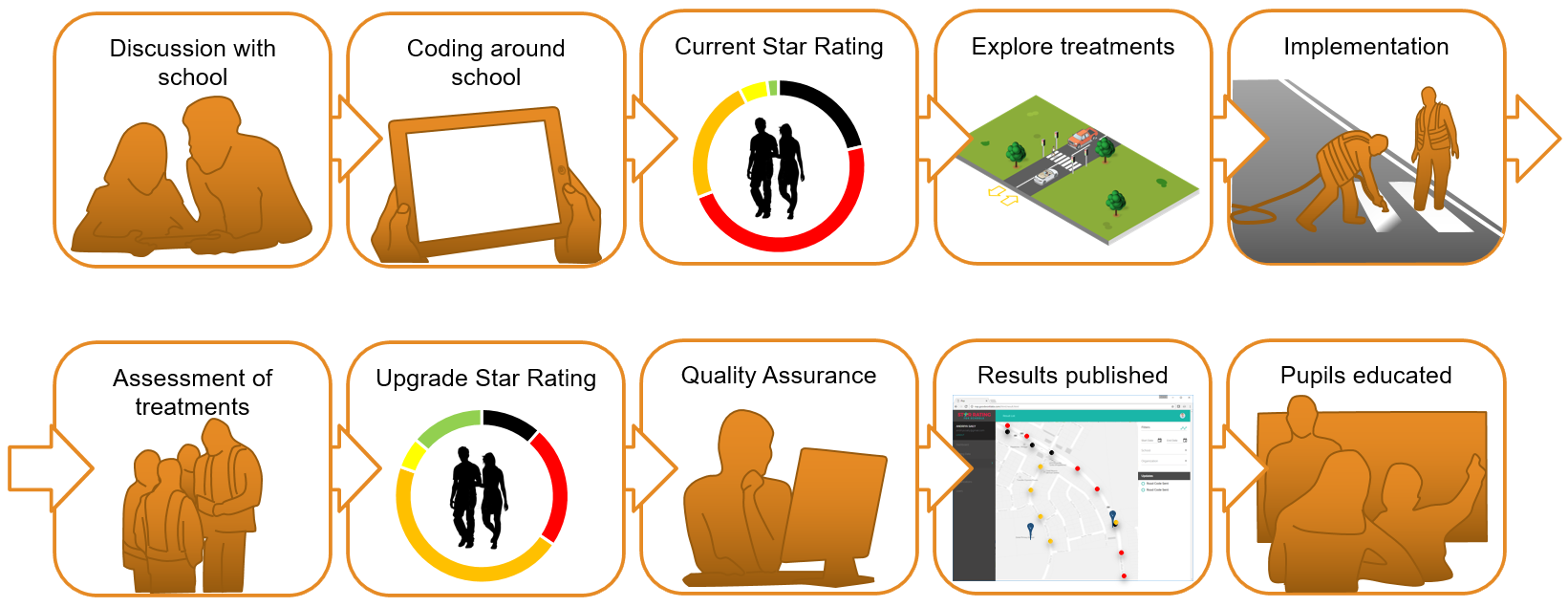
HOW IT WORKS
We know the road features that affect the pedestrian safety on a journey to school. Using evidence-based research of their impact on safety, a Star Rating is calculated at spot locations, where 1-star is the least safe and 5-star is the safest. SR4S combines a central web application and a data collection Android app that harness the power of the iRAP Star Rating for Pedestrians.
Once the risk is measured, effective scenarios of road treatments and their impact on safety can be simulated to identify cost-effective solutions. The implementation of the treatments can ultimately be tracked so that the partner and funder can see the benefits of their investment and the school teaching staff can educate the pupils on the correct use of the treatments.

WHAT ROAD FEATURES ARE RECORDED?
Download the Star Rating coding guide to understand what needs to be recorded
Step by step process
STEP 1: PARTNERS FOR SUCCESS
The major stakeholders may include:
- The local community
- Governmental authorities (both local and national)
- Road authorities
- Private organisations
- Health agencies
- Educational agencies
- Council administrations
- Local civil society organisations.
STEP 2: SECURE FUNDING
- Working hours of the team directly involved in carrying out the project
- Training activities undertaken by the team
- Production of communication materials
- Supporting outreach activities like engagement meetings and surveys
- Implementing findings such as road upgrades
- Mass media campaigns.
STEP 3: BUILD CAPACITY ON ASSESSMENTS
Build and develop assessment teams and make the most of their skills when it comes to infrastructure data collection. Project partners responsible for Star Rating for Schools data collection are required to attend formal training delivered by the International Road Assessment Programme (iRAP) or a SR4S Lead Partner. You can register here to attend SR4S video courses (in English or Spanish).
STEP 4: IDENTIFY HIGH-RISK SCHOOLS
STEP 5: ENGAGE WITH THE SCHOOLS
STEP 6: CHOOSE AN ASSESSMENT APPROACH
STEP 7: ASSESS INFRASTRUCTURE SAFETY
STEP 8: ADVOCATE FOR ROAD UPGRADES
STEP 9: CELEBRATE SUCCESS
STEP 10: GROW SUCCESS
For more details: Take a look at the FIA School Assessment Toolkit. The toolkit is a dedicated web-based depository guiding through the key steps and the knowledge, guidelines and templates needed to plan, resource, apply and advocate for the upgrades that will save children’s lives with a 5-star journey to school.

